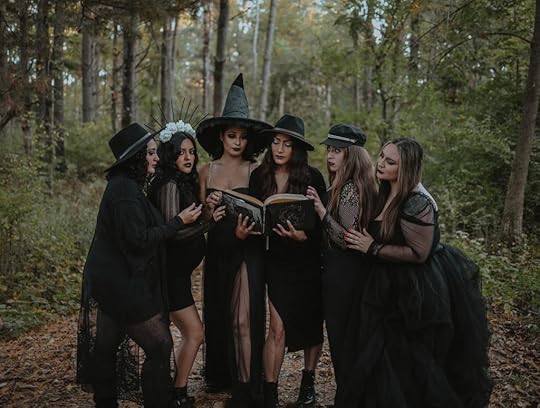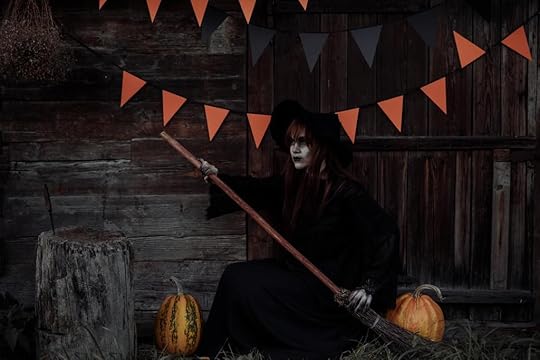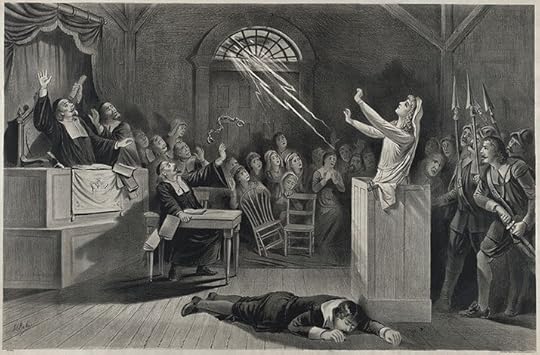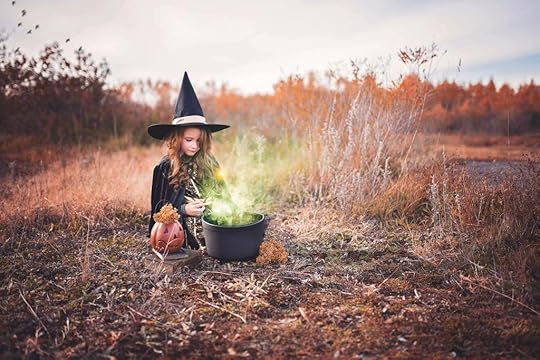Witches

Witches were perceived as evil beings by early Christians in Europe. Witch imagery has appeared throughout history – from women huddling over cauldrons to cackling beings flying through the sky. But where did this idea of a magical woman come from?

Early witches were thought to be non-Christians or pagans doing the Devil’s work. It is unclear exactly when witches were first introduced into the historical record. One of the earliest records of a witch is actually mentioned in the Bible.
In the book of 1Samuel – written between 931 BC and 721 BC, a passage tells of King Saul seeking the Witch of Endor to summon the dead prophet Samuel’s spirit for guidance. Other stories in the Old Testament condemn witches including Exodus 22:18 which says: “thou shalt not suffer a witch to live.”

Witch hysteria really took off in Europe in the mid-1400s when may accused witches confessed, often under torture. Within a centruy, witch hunts were common and most were executed by burning or hanging. Single women, widows, and other women on the margins were especially targeted.
This hysteria followed colonists to the New World. A smallpox epidemic and fear of attacks from Indigenous people created a powder keg. This sparked the witch trials that took place in Salem, MA in 1692.
By the time the dust settled, 150 people were accused of witchcraft and 18 were put to death. So what sparked this mass hysteria?

Most witches were natural healers or “wise women” whose choice of profession put them in the line of fire. The past has a long history of punishing women in power. Many of these women had no fault except being experts in their fields. And perhaps not following Christianity.
In the Middle Ages, Christianity quickly became the religion of the land. At the same time Witch hysteria took hold of Europe. These can be seen as going hand in hand. Those who did not convert would be seen as doing the Devil’s work and had to be “taken care of.”
So what explains the documented accusations of witchery seen in the Salem Witch Trails?

The Salem Witch Trials began when 9-year-old Elizabeth Parris and 11-year-old Abigail Williams began suffereing fits, body contortions, and uncontrolled screaming. More girls began exhibiting symptoms, leading to the first accusations. The enslaved woman – Tituba was the first to be accused and forced to confess of practicing black magic.
However, today historians believe that these hallucinations and fits were caused from a less magical origin. The colonists of Salem were suffering from ergotism or poisoning resulting from fungus growing on their grain.
Ergot poisoning can cause dramatic symptoms including the feeling of your skin crawling, sudden dizziness, hallucinations, paranoia, mania, and delirium. Each of these symptoms match afflicictions caused by the witches in the records from the Salem trials.
Weather patterns from the year prior to the hysteria show that Salem experienced a warm, rainy spring. This would have been prime conditions for fungal growth. As grain is harvested and stored for months, the contaminated grain would not have been eaten until around November. The first accusations were in December 1691 after the consumption of the grain.
The hysteria lasted for approximately one year with the last executions on September 22, 1692. A dry summer that year led to no fungal growth, putting an end to the symptoms and to the trials.

The image we associate with these witches has changed a lot over time. Human healers and poisoned grain would not explain all the imagery. Artist Albrecht Dürer is credited with defining the way we view them today with his series of engravings. He depicted them as young and nubile with the capability to enthrall men but also to turn into a crone, worshipping the horned goat. Dürer stated that his inspiration was Italian artist Andrea Mantegna’s concept of Envy.
Many other artists were inspired by this same piece producing what is considered the golden age of witchcraft imagery – during the 16th and 17th centuries. As a result there was an outpouring of misogynistic witchcraft imagery, with artists taking advatage of the growing technology to quickly disseminate their material. Historians have credited the spreading of witchcraft hysteria with the print revolution. Many of the prints created during this period were powerful color woodcuts that caught the attention of passerby, helping to sell newspapers and pamphlets.
By the 18th century, witches had lost their threatening edge. Instead they were seen more as an archaic superstition. Still artist Goya used them as vehicles for his satire. Goya depicted the women flying around on a broom. The print was titled with the Spanish ‘volar’ meaning to fly, but also used as a slang for having an orgasm. His images were used as a commentary on greed and corruption.
These prints are often credited with solidifying the broom riding images we use today. It is also seen as another way to make a group of women as other. Homosexuality in the 18th Centurity was criminalized with a punishment of death. By fanatics the act was seen as the work of the Devil and those engaging must be “taken care of.”
Most recently, witchcraft has been associated with those practicing Wicca. Since the 1960s, this religion has become more mainstream with more than 1.5 million practicers in the United States, but this does not mean that everyone has moved past their fear of witches. As recently as 2010, people suspected of witchcraft were beaten and killed in Papua New Guinea – including a young woman being burned alive.

The one constant throughout the history of witchcraft is misogyny. Witches were used as the scapegoats on which the evil of society was – and still is – projected. While the major hysteria during the Puritan Age has passed, there is still a long way to go before witches – real or perceived- will be safe from persecution.
Sources:
Berger, H. (n.d.). What is wicca? an expert on modern witchcraft explains. BrandeisNOW. Retrieved October 8, 2022, from https://www.brandeis.edu/now/2021/september/wicca-berger-conversation.html
History.com Editors. (2017, September 12). History of witches. History.com. Retrieved October 8, 2022, from https://www.history.com/topics/folklore/history-of-witches
Powell, S. D. (2017, November 24). Queer in the age of the queen: Gender and sexuality of the mid modern period in Victorian England and North America. Molly Brown House Museum. Retrieved October 8, 2022, from https://mollybrown.org/queer-in-the-age-of-the-queen-gender-and-sexuality-of-the-mid-modern-period-in-victorian-england-and-north-america/
Questions about Salem Ma Witchcraft: 1692 Salem witch museum. Salem Witch Museum. (2022, September 7). Retrieved October 8, 2022, from https://salemwitchmuseum.com/faqs/#:~:text=The%20Salem%20witch%20trials%20took,the%20first%20arrests%20were%20made.
Smith, T. (2015, May 27). Monsters that were actually sick. Mental Floss. Retrieved October 8, 2022, from https://www.mentalfloss.com/article/64376/call-doctor-not-exorcist-monsters-were-actually-sick?fbclid=IwAR1Oiy5tUBes8T5P9krucnEqs3gWtOenVtycYT6JKiZ_2a4n97ZMM87U5Ww
Sooke, A. (n.d.). Where do witches come from? BBC Culture. Retrieved October 8, 2022, from https://www.bbc.com/culture/article/20140925-where-do-witches-come-from
Young, F. (2020, February 1). The myth of medieval paganism: Francis Young. First Things. Retrieved October 8, 2022, from https://www.firstthings.com/article/2020/02/the-myth-of-medieval-paganism



